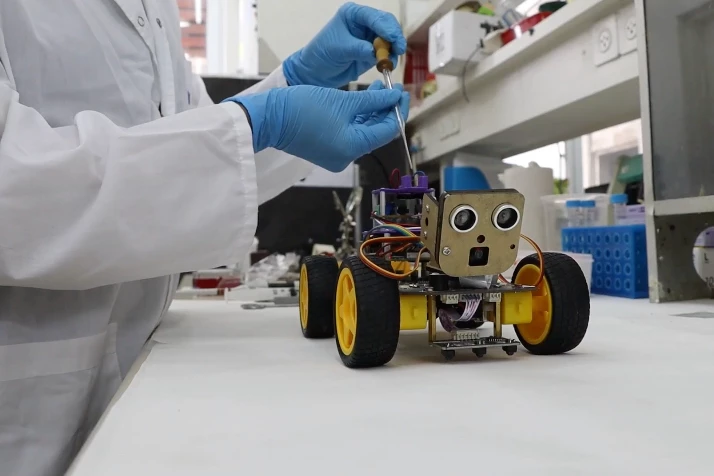While we've heard about a number of "electronic noses," the devices are rarely as sensitive as their natural counterparts. That's why Israeli scientists have taken a new approach, by incorporating a locust antenna into an odor-identifying robot.
So first of all, yes, locusts do indeed detect smells via their antennae. In fact, they're so good at doing so, researchers at Washington University in St. Louis previously explored the possibility of turning the insects into explosives-sniffing cyborgs.
For the new study, a team at Tel Aviv University took a single locust antenna and incorporated it into an electronic system on a wheeled robot.
As that antenna was subsequently exposed to eight different odors (including lemon, geranium and marzipan), it produced electrical signals which were detected and recorded by the electronics. A machine-learning algorithm subsequently matched each distinctive pattern of signals to its known corresponding odor, thus establishing electrical signatures for each of the eight scents – and the fun didn't stop there.
"After the experiment was over, we continued to identify additional different and unusual smells, such as various types of Scotch whiskey," said Prof. Yossi Yovel, who led the study along with Dr. Ben Maoz, Prof. Amir Ayali and doctoral student Neta Shvil. "A comparison with standard measuring devices showed that the sensitivity of the insect’s nose in our system is about 10,000 times higher than the devices that are in use today."

Because the robot is mobile, the scientists are now working on methods of allowing it to follow odors to their source. It is hoped that the technology could ultimately have applications such as the detection of bombs at airports, or the tracking of criminals.
A paper on the research was recently published in the journal Biosensors and Bioelectronics.
And if airborne odor-tracking is what's called for … well, that's where the Smellicopter could come in. Developed by a team at the University of Washington, it's a moth-antenna-equipped quadcopter drone that sniffs out the sources of smells.
Source: Tel Aviv University via AlphaGalileo




